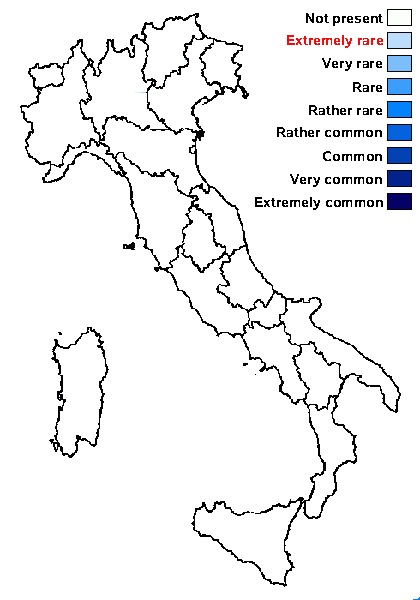Arthonia pragensis Horáková
Czech Mycol., 47, 2: 139, 1994.
Synonyms:
Distribution:
Description: Thallus inapparent, not lichenized, the hyphae developing inside the thalli of unidentified crustose lichens. Apothecia arthonioid, brown-black, 0.25-0.35 mm across, without a distinct margin, arranged in dispersed, 0.5-0.7 mm wide, tuberculate clusters. Proper exciple absent or much reduced; epithecium very dark brown, 7-12 µm high, K+ olive-green; hymenium pale brown, K+ yellowish green, I+ red, K/I+ blue; paraphysoids coherent, branched and anastomosing, subhyaline in lower part, pale to dark brown towards the apex, c. 1.5 μm thick, the apical cells up to 3 µm wide; hypothecium brown, K+ orange-red to wine-red. Asci 8-spored, broadly obovate, semi-fissitunicate, with a large, non-amyloid apical dome, an ocular chamber, and a distinct K/I+ blue ring in tholus, Arthonia-type. Ascospores 1-septate, constricted at the septum, with unequal cells, hyaline, smooth-walled, 13-18.5(-20) x 5.5-8 µm. Photobiont absent. Spot tests: K-, C-, KC-, P-. Chemistry: without lichen substances.Note: a lichenicolous fungus growing on Kuettlingeria teicholyta (and an unidentified crustose saxicolous lichen), known from Spain and the Czech Republic, to be looked for in Italy.
Growth form: Lichenicolous fungus
Substrata: rocks
Reproductive strategy: mainly sexual

Predictive model
Growth form: Lichenicolous fungus
Substrata: rocks
Reproductive strategy: mainly sexual

Predictive model
 Index Fungorum
Index Fungorum
 GBIF
GBIF

